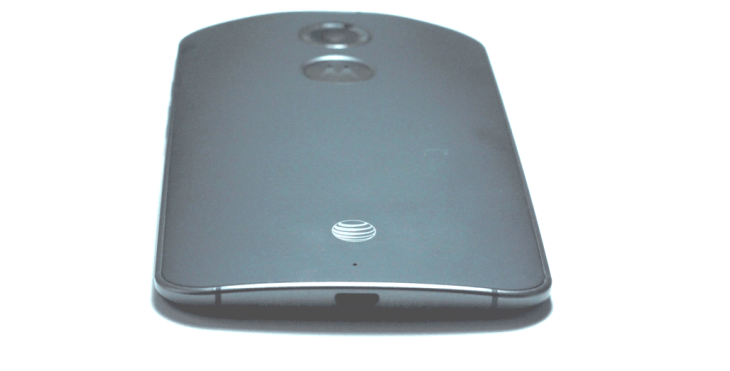As we enter the era of the ubiquitous Big Phone, it’s refreshing to hold something like the slim and light second-generation Moto X. Priced at $500 unlocked and about $99 with a contract, this 5.2-inch phone with 1080p OLED screen and Gorilla Glass front is a step beyond the latest from LG and, while not as feature-rich as the Samsung Galaxy S5, well worth a look as an upgrade to your Android arsenal.
I used this phone primarily with the Moto 360 and carried it for a week or so while testing the watch. The model I used, a handsome gray and steel device with a little dimple on the back to help position your finger, is just one of the many permutations available at Motorola’s Moto Maker page. The company, which is still on thin ice, at least in terms of market share, has thrown everything it can into materials. By allowing you to add a pink leather or bamboo back and a colorful trim, they hope to make these Motos yours (and, presumably, reduce returns.)
The phone has only two buttons – a rocker for the volume and a single activity button on the right side. The back sports a large 13-megapixel camera and a smaller 2-megapixel camera adorns the front. The phone makes use of the camera in unusual ways. For example, you can wake the phone by moving your hand in front of it to see notifications and you can wake the phone and talk to it by setting a unique “wake up call,” “Hey, Moto, what’s up?” for example. These two features are a bit unnerving at first because the phone consistently perks up while it’s at rest. However, the features didn’t reduce battery life and I saw the phone last about a day on one charge – about average for similar smartphones.
So who is the Moto X for? First, it’s for folks looking to upgrade their original Moto X, another excellent flagship phone. This new model is slightly bigger than the older Moto X and is a much nicer product. The materials are excellent and the phone is solid in the hand. You’re obviously losing an expandable storage slot in this design – something many have complained about in this model – but you make up for it in design. Most interesting, however, is the Moto X’s excellent Geekbench score. Clocking in at 979, a few points higher than the M8 and considerably higher than the original, the 2.5GHz Qualcomm Snapdragon 801 chip shines in this device.
A little afterimage while moving the camera but video is acceptable.
The camera is acceptable, although I saw nothing to particularly recommend or condemn. This reviewer grabbed some good shots with the phone and I found the same was true of the unit I tested – consistently good (if not amazing) snapshots. You can download the full-resolution originals here.
[gallery ids="1062084,1062085,1062086,1062089,1062090,1062091,1062093,1062094,1062095,1062096,1062098,1062100,1062101"]
The question is then why should you upgrade to this if you’re not a Motorola fan or you’re locked into another series of phones? I’d argue the unique colors materials are one reason you’d jump to this from, say, a much older phone. But that’s not enough for us geeks. The screen, it should be said, is a great upgrade over previous models and is on par with some of the best we’ve seen from HTC and Samsung. The processor is solid and speedy and the version Android installed, namely 4.4.4 KitKat, is unencumbered by much bloatware or odd UI tricks.
[gallery ids="1062050,1062053,1062051,1062048,1062047,1062046,1062045"]
I like this phone. It’s light, it’s nicely designed, and it seems to be the epitome of Motorola’s decade-long dedication to quality in design. This phone won’t change the fact that Samsung is still the big dog in Android sales, but it definitely shows us that there are contenders with enough chops to be dangerous.
